- The academic resource center at Blue River can assist students with strengthening basic skills. Free tutoring is available, as well as math and writing labs. There is also computer-assisted instruction. Blue River's computer labs are open to students who need access to computers for projects such as term papers or research. The newly-renovated student development center at Blue River houses the offices of academic advising, counseling, financial aid and student employment services. Students can meet with the student development staff for one-on-one assistance, or work individually in the self-serve areas. Depending on the needs of the individual student, the student development center provides the level of service needed for students to achieve their goals. The student development professionals are on hand to help students make good, sound academic and career planning choices.
School Highlights
Metropolitan Community College-Blue River serves 3,583 students (44% of students are full-time).
The college's student:teacher ratio of 47:1 is higher than the state community college average of 16:1.
Minority enrollment is 22% of the student body (majority Hispanic), which is less than the state average of 41%.
Quick Stats (2025)
- Enrollment: 3,583 students
- Student:teacher ratio: 47:1
- Minority enrollment: 22%
- Source: Integrated Postsecondary Education Data System (IPEDS)
School Overview
The teacher population of 76 teachers has stayed relatively flat over five years.
Metropolitan Community College-Blue River
(MO) Community College Avg.
Carnegie Classification
Associate of Arts Colleges
Baccalaureate Colleges: Diverse Fields
Institution Level
Less than 2 yrs
At least 2 but less than 4 years
Institution Control
Public
Public
Total Faculty
76 staff
139 staff
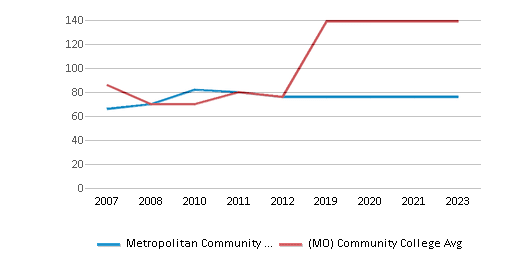
School Calendar
Student Body
The student population of Metropolitan Community College-Blue River has stayed relatively flat over five years.
The student:teacher ratio of 47:1 has stayed the same over five years.
The Metropolitan Community College-Blue River diversity score of 0.38 is less than the state average of 0.61. The school's diversity has stayed relatively flat over five years.
Total Enrollment
3,583 students
1,159 students
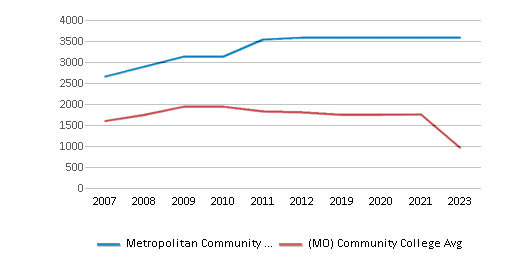
Student : Teacher Ratio
47:1
16:1
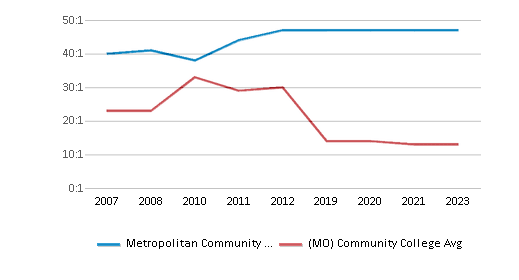
# Full-Time Students
1,582 students
718 students
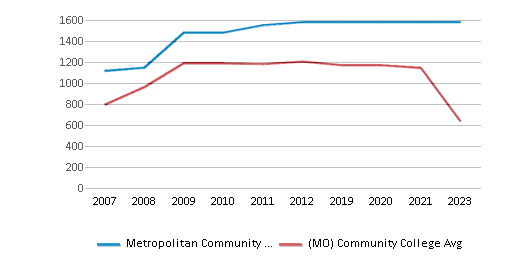
# Part-Time Students
2,001 students
1,407 students
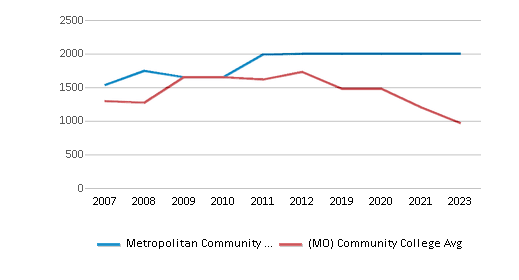
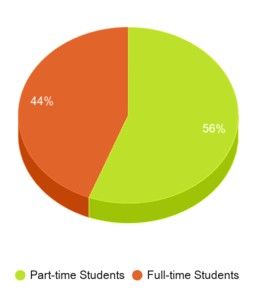
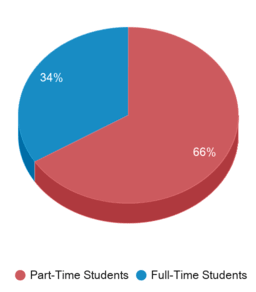
# Enrollment Undergraduate
n/a
246 students
# Full-Time Undergraduate Students
3,583 students
834 students
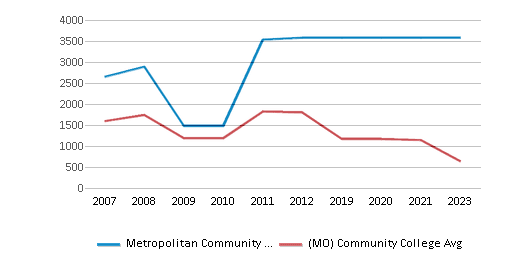
# Full-Time Graduate Students
n/a
11 students
# Part-Time Undergraduate Students
n/a
684 students
# Part-Time Graduate Students
n/a
9 students
Total Dormitory Capacity
n/a
200 students
% American Indian/Alaskan
n/a
n/a

% Asian
1%
2%
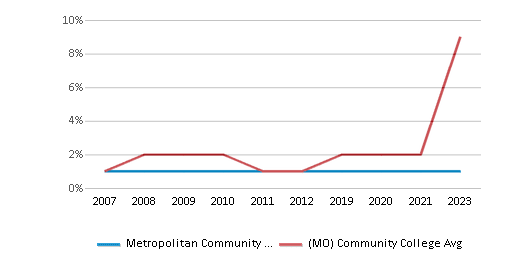
% Hispanic
7%
6%
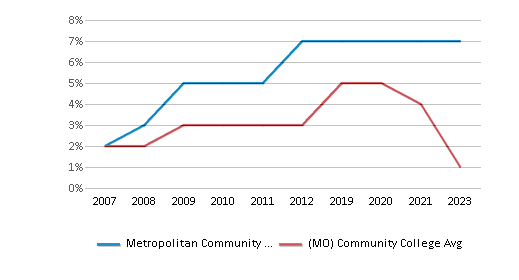
% Black
5%
10%
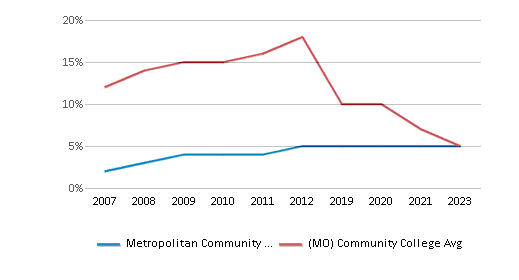
% White
78%
59%

% Hawaiian
1%
1%
% Two or more races
6%
4%
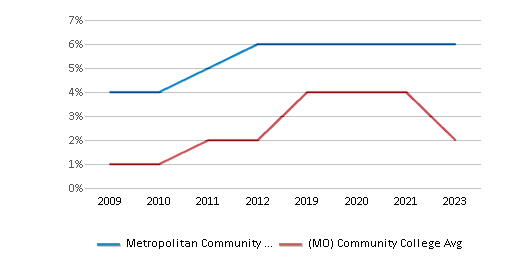
% Non Resident races
n/a
1%
% Unknown races
2%
17%
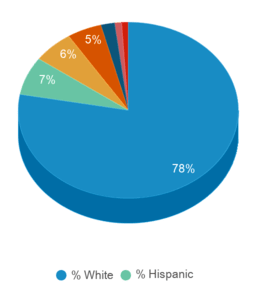
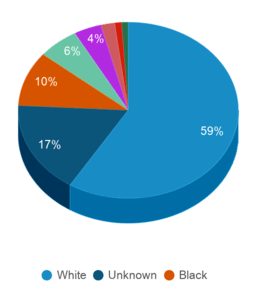
Diversity Score
0.38
0.61

College Completion Rate (Students who graduate in less than 4 years)
23%
29%
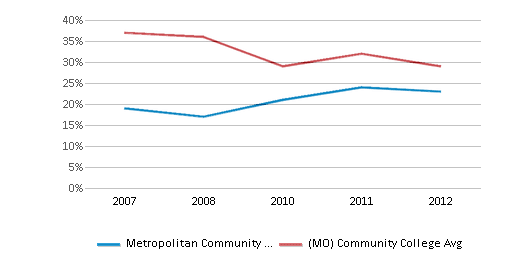
College Completion Rate (Students who graduate in 4 years or more than 4 years)
n/a
0.6154%
Average Graduate Earnings (10 Years)
$31,900
$31,100

Tuition and Acceptance Rate
% Students Receiving Some Financial Aid
65%
83%
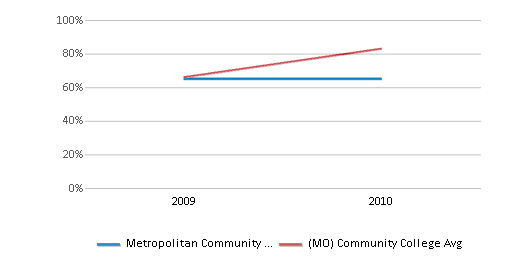
Median Debt for Graduates
$7,078
$9,500
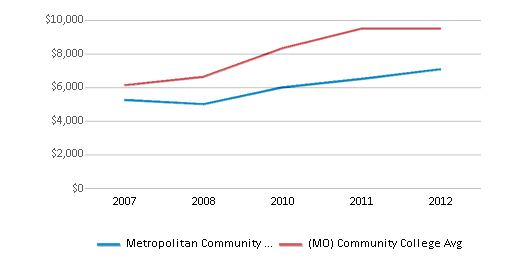
Median Debt for Dropouts
$3,859
$4,750
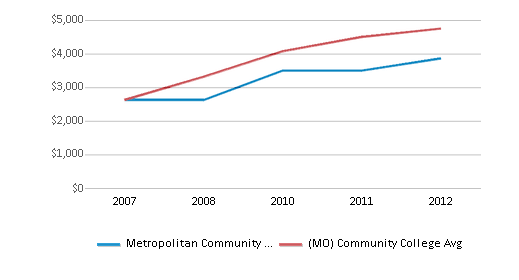
Acceptance Rate
n/a
94%
Source: 2023 (or latest year available) Integrated Postsecondary Education Data System (IPEDS)
Frequently Asked Questions
What schools are Metropolitan Community College-Blue River often compared to?
Metropolitan Community College-Blue Riveris often viewed alongside schools like Metropolitan Community College-Kansas City by visitors of our site.
Recent Articles

Obtaining Your Bachelor's Degree at a Community College
Explore the evolving landscape of community colleges offering bachelor's degrees, addressing affordability, accessibility, and workforce needs.

A to Z of Community College Certificates and Courses
From business and healthcare to technology and skilled trades, the article showcases the breadth of options available to students seeking to enhance their knowledge, develop new skills, or pursue career advancement.

What is a Community College?
This comprehensive guide explains what a community college is, its history, and its role in higher education. It covers the types of programs offered, differences from four-year colleges, benefits of attending, and important considerations for prospective students, providing valuable insights for those exploring educational options.






